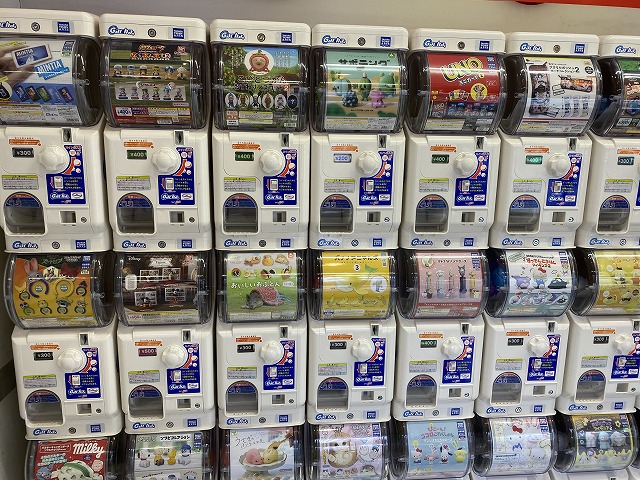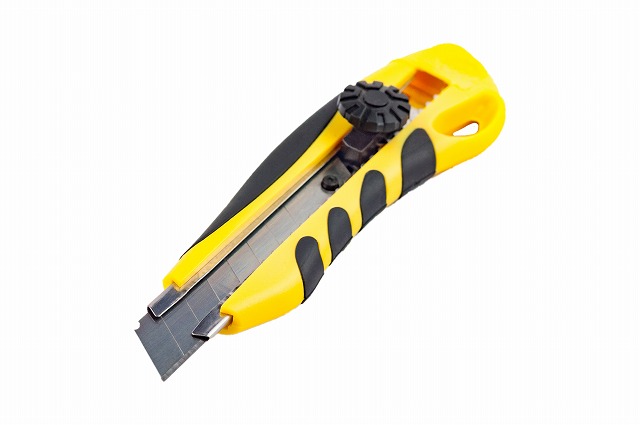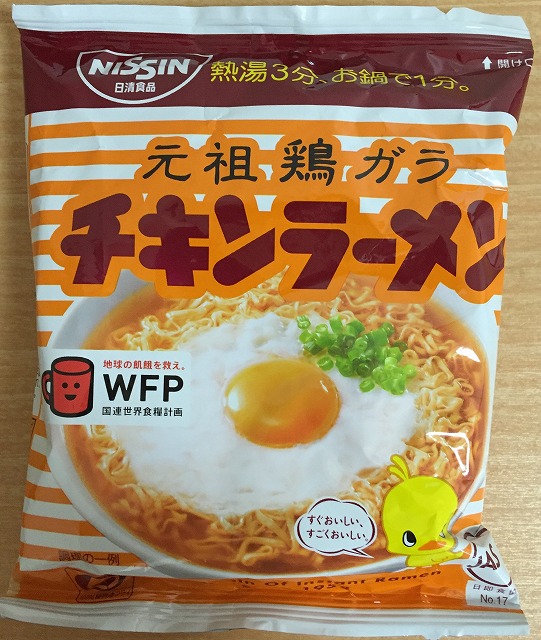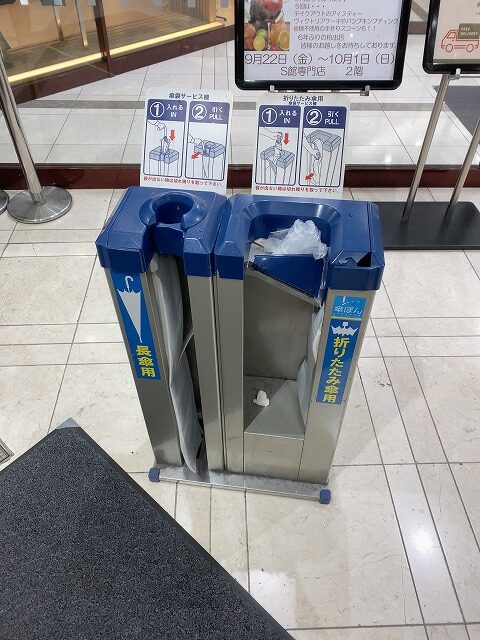At JAPANESE TRIVIA, we introduce various topics about Japan!
-

-
Japanese Miniature Culture: GASHAPON
Hello! Today, I will introduce you to a toy that's hugely popular in Japan, contained within a capsule. While these toys are formally known as "capsule toys", they are more commonly referred to by the registered trademark of the comprehensive toy manufacturer, Bandai, known as "GASHAPON" (or "GACHAPON"). Additionally, Takara Tomy, another toy manufacturer, also sells capsule toys under the name "GACHA." GASHAPON GACHA What is GASHAPON? GASHAPON machines are box-shaped devices filled with small capsules containing miniature models or figures. By inserting a coin and turning the handle, a randomly selected capsule from the machine is dispensed. With a ...
-

-
Is every Japanese person a NINJA?
Hello everyone. I want to share the results of an interesting experiment. The experiment's theme was, "How often do people apologize when bumped into on the street?" It was conducted in tourist areas in London and Oxford, UK, targeting tourists of various nationalities, including Americans, Germans, Japanese, Spaniards, Australians, and Scandinavians. Results for Japanese participants: In the experiment, many people from different countries apologized when intentionally bumped into by the experimenter. However, the results for the Japanese were surprising. Even when the experimenter tried to bump into them on purpose, Japanese participants quickly sensed the movement and evaded it. This ...
-

-
Souvenir Culture in Business
Hello! Today, I will introduce the culture of giving souvenirs in the workplace and business. About Japan's Souvenir Culture In Japan, there is a long-standing culture of giving souvenirs. When returning from trips or business trips, it's a common practice to bring something back for family, friends, and coworkers as a gesture of gratitude and to share memories of the journey. Souvenir Culture at the Workplace In Japanese workplaces, when returning from domestic or overseas business trips, it's common to bring back food, especially sweets, as souvenirs for colleagues. Particularly, female employees who like sweets often look forward to receiving ...
-

-
The QR Code Invented by the Japanese
The QR code is a two-dimensional code composed of black and white squares. By scanning it with a smartphone camera, you can obtain information such as URLs, phone numbers, and email addresses. The Invention of the QR Code The QR code was developed in 1994 by Mr. Masahiro Hara, an engineer at the Japanese automobile parts manufacturer "DENSO WAVE". At the time, barcodes were used in manufacturing, but a code that could read more information at a faster rate was needed. Mr. Masahiro Hara developed the QR code in response to this need. The QR code was first adopted for ...
-

-
The Precision of Japanese Trains and Delay Certificates
Hello! Today, I'd like to introduce you to the punctual operation of Japanese trains. Japanese trains rarely run late Japanese trains are known worldwide for their punctuality. Whether in urban or rural areas, trains run almost exactly according to the timetable. Even when there are delays, they typically last only a few minutes. In the urban train interiors, an apology announcement is broadcast even for a mere one-minute delay. Interestingly, the high-speed railway "Tokaido/Sanyo Shinkansen", which operates approximately 320 times a day and transports around 460,000 passengers, has an average delay time of just 12 seconds per train. Even for ...
-

-
Rainy Days in Japan: Measures for Wet Umbrellas
In this article, we will introduce something commonly seen on rainy days in Japan. Japan has unique measures to prevent bringing water droplets inside buildings on rainy days. Especially in places like department stores and restaurants where many people visit, you can find the following three types of measures: Manual Type At the entrance, there are plastic bags provided to cover your umbrella. This is to prevent dripping water by covering the umbrella yourself. When leaving the store, you remove the plastic bag from the umbrella and dispose of it in the trash can. This is the most common measure ...
NEXT
-

-
KAIZEN: The Japanese Quality Management Method and Its Global Impact
KAIZEN is a quality management method that originated in Japan's manufacturing industry. This term is now recognized in the business world globally. Let's take a closer look at the origins of KAIZEN, its fundamental principles, and its spread across the world. Origins of KAIZEN KAIZEN was born in post-war Japan. Japanese companies cultivated a culture of making small, regular improvements to increase production efficiency. This continuous improvement effort became known as KAIZEN. The term KAIZEN means "continuous improvement" and refers to a business activity in which all employees are involved. The Basics of KAIZEN The concept of KAIZEN is simple. ...
-
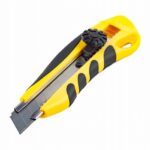
-
Cutter Knife: Japan's Remarkable Invention
The cutter knife is an incredibly useful tool that we utilize in various scenarios - in our daily lives, in the office, in art, and the construction industry, to name a few. There might be few who deeply understand the origins of this simple yet revolutionary tool, or the backstory of why it's loved worldwide. The Origin of the Japanese Cutter Knife the challenging times after the war, thought of a method to cut paper using shards of glass. Inspired by the creases in the chocolate bars eaten by the American occupation soldiers, he came up with the idea of ...
-

-
Souvenir Culture in Business
Hello! Today, I will introduce the culture of giving souvenirs in the workplace and business. About Japan's Souvenir Culture In Japan, there is a long-standing culture of giving souvenirs. When returning from trips or business trips, it's a common practice to bring something back for family, friends, and coworkers as a gesture of gratitude and to share memories of the journey. Souvenir Culture at the Workplace In Japanese workplaces, when returning from domestic or overseas business trips, it's common to bring back food, especially sweets, as souvenirs for colleagues. Particularly, female employees who like sweets often look forward to receiving ...
-

-
The QR Code Invented by the Japanese
The QR code is a two-dimensional code composed of black and white squares. By scanning it with a smartphone camera, you can obtain information such as URLs, phone numbers, and email addresses. The Invention of the QR Code The QR code was developed in 1994 by Mr. Masahiro Hara, an engineer at the Japanese automobile parts manufacturer "DENSO WAVE". At the time, barcodes were used in manufacturing, but a code that could read more information at a faster rate was needed. Mr. Masahiro Hara developed the QR code in response to this need. The QR code was first adopted for ...
-

-
Japan's Commuting Rush: Train Crowds and Surprising History
Hello! Today, I'd like to share with foreigners about Japan's "commuting rush" and some surprising stories related to it. What is the Commuting Rush? The "commuting rush" refers to the time periods, mainly in the morning and evening, when a large number of people head to work or school. Especially in urban areas, transportation gets extremely crowded during these times due to the high volume of people moving. Train Crowding Trains in urban areas of Japan get incredibly packed during the commuting rush. In major cities like Tokyo and Osaka, passengers can hardly move inside the train cars. Many foreign ...
-

-
Japanese Business Etiquette: Do Not Cross Your Legs During Meetings
Japanese business culture is shaped by its unique traditions and manners. Within this, the way one carries themselves and their demeanor in business settings is of paramount importance. In particular, let's discuss a point that foreign businesspeople should be aware of regarding how one positions their legs during meetings and discussions. The Act of Crossing Legs In many countries, crossing one's legs is seen as a gesture indicating a relaxed posture or confidence. However, in the Japanese business scene, there's a tendency to avoid doing so. Why Legs Shouldn't be Crossed Expression of Respect: In Japanese culture, in order to ...
NEXT
-

-
Japanese Miniature Culture: GASHAPON
Hello! Today, I will introduce you to a toy that's hugely popular in Japan, contained within a capsule. While these toys are formally known as "capsule toys", they are more commonly referred to by the registered trademark of the comprehensive toy manufacturer, Bandai, known as "GASHAPON" (or "GACHAPON"). Additionally, Takara Tomy, another toy manufacturer, also sells capsule toys under the name "GACHA." GASHAPON GACHA What is GASHAPON? GASHAPON machines are box-shaped devices filled with small capsules containing miniature models or figures. By inserting a coin and turning the handle, a randomly selected capsule from the machine is dispensed. With a ...
-
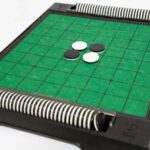
-
The Invention of Othello by the Japanese
Othello is a board game where players alternately place black and white stones, capturing the opponent's stones by sandwiching them between their own. While it's a game loved worldwide, it's actually an invention from Japan. The Creation of Othello Othello was invented by a Japanese man named Mr. Goro Hasegawa. Mr. Goro Hasegawa came up with this game in 1945, during his junior high school years, shortly after the end of World War II. At that time, Japan had few forms of entertainment due to the aftermath of the war, and Mr. Goro Hasegawa created this game to play with ...
-

-
Japanese Pen Spinning Performance
Hello! Today, I'd like to introduce you to a unique aspect of Japanese culture, "pen spinning." As the name suggests, pen spinning refers to the technique and art of twirling a pen using one's fingers. It's especially popular among students and was often seen during school break times. Origins of Pen Spinning The exact origins of pen spinning—when and where it began—are unclear. However, in Japan, there seems to have been a form known as "pencil spinning" even before World War II. Later, with the introduction of mechanical pencils, which were easier to spin than regular pencils, it seems there ...
-

-
The Allure of Japanese Model Railways
Japan is renowned as a railway powerhouse. Many people use trains and bullet trains daily for commuting. This railway culture has further evolved in the form of "model railways." Japanese model railways are embraced by numerous enthusiasts due to their detailed accuracy and high quality. History and Development The history of Japanese model railways dates back to the 1930s. Initially, many were handcrafted, but with the onset of the 1950s, industrialization progressed, and many manufacturers entered the market. Particularly from the 1970s to the 1980s, with technological advancements and growing popularity of railways, it can be said that there was ...
-
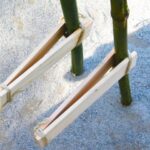
-
Japan's TAKEUMA: Origins and Its Benefits
Hello! In this article, we will delve deeper into the traditional Japanese game called "TAKEUMA." The Origins of TAKEUMA TAKEUMA is a toy made of bamboo or wood that children can ride and walk on. It has a long history, believed to have been used in Japan around the 10th century AD. From that time, there are records and illustrations showing children enjoying this game. Nowadays, instead of bamboo or wood, stilt toys made of aluminum, plastic, and rubber are sold. The Benefits of TAKEUMA TAKEUMA offers the following remarkable benefits: Mastering Balance: Riding on TAKEUMA helps cultivate the ability ...
-

-
The Fascinating World of Kendama: Japan's Traditional Skill Toy
Have you ever heard of Kendama? This traditional Japanese toy has been captivating people for centuries and has recently gained international popularity. Let's dive into the world of Kendama and discover its charm! What is Kendama? Kendama is a traditional Japanese skill toy that consists of a wooden handle (ken) and a ball (tama) connected by a string. The ken has three cups and a spike, and the objective is to catch the ball on one of the cups or the spike. History of Kendama The origins of Kendama can be traced back to the 17th century. It is believed ...
NEXT

